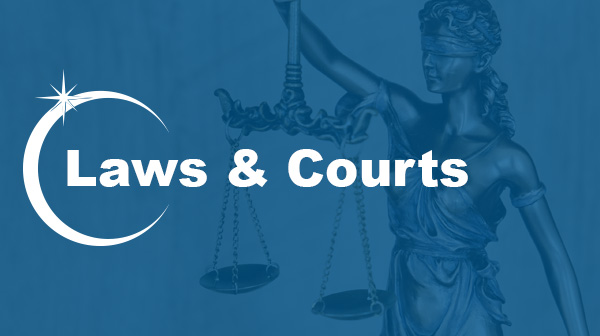A travesty in New York–is help on the way?
By Sandy . . . When Johnny Brown was 18, he committed a felony which resulted in a sentence of five years’ imprisonment and five years’ parole.
Johnny served out his full sentence of incarceration, and his release date was January 30, 2015. Three months prior, he was told that he needed to submit the address to which he would be paroled. The state of New York places restrictions on parole housing for some convictions. Johnny wanted to go home, and his parents were eager to have him home. Unfortunately, home was not approved; it ticked the box for one of New York’s “no-nos.” It was 989 feet from a school, and New York’s exclusion zone around schools is 1,000 feet. Johnny’s conviction fell into the exclusion category.
Johnny had a cousin and several friends who offered Johnny housing, and one by one they were shot down. January 30 came, and Johnny was out of options. Since the family could not afford separate housing for Johnny, even if anything acceptable could be found, he would be released to homelessness.
Except. For Johnny’s category of crime, homelessness on parole is not allowed. It needs to be a specific, approved address.
Not to worry, said the New York prison system; we’ve got it covered. We have residential treatment facilities for this very purpose. Envisioning a half-way house, Johnny and his family were relieved.
Johnny was not moved to a residential treatment facility. He was moved to a different prison. He still lived in a cell, this one in general population. He was still locked up, with virtually every move dictated 24 hours a day. The requirements for a “residential treatment facility,” such as education, treatment, and work, were barely discernible. “Work” was inside the prison, not out.
He was still behind bars against his will, and there he would remain until the end of his parole period – which has been extended twice because of disciplinary action due to his violating certain prison rules, which in turn, at the whim of officials, violated the terms of his parole conditions and added time. His release date is now January 30, 2024.
Since he will then be required to register on the sex offender registry, his housing once more will need to be approved. The homes of family members and friends are still off limit. Any other affordable housing is virtually non-existent. At this point, the chances are he will become homeless.
In the first section of a lengthy piece written by journalist Chris Gelardi, Johnny Brown, with some variance in details, is Jory Smith, whose story Gelardi posted October 17, 2023, at New York in Focus as part of a piece titled, “They Were Supposed to Be Free. Why Are They Locked up?”
In the same piece, he—Johnny–is Chris Gordon, another man with a sex crime conviction who has become so ill and incapacitated in prison that, with the absence of appropriate care and medical attention, he may not live to see the end of his time as a “parolee” and his actual release from prison, a release that will provide him nowhere to go but the streets. With conservative-driven policies becoming more prevalent, even shelters and care-homes are frequently off-limits.
Johnny Brown is the thousands of men who, for the past two-plus decades, have been kept in New York prisons past their latest official release date and up to the expiration of their end-of-parole date.
Mr. Gelardi concludes the first section of his excellent piece with these words from Jory:
“ ‘I’m under the impression that your readers won’t care,’ he wrote in a message to New York Focus and The Nation. ‘The general public and the courts want sex offenders off the streets at all costs, including violating the law and Constitution.’ “
To this, the journalist adds only, “It’s common for people to end up homeless after prison, and the legal authority that officials cite to keep him incarcerated is broad—’opening the doors’ for the state to indefinitely detain more and more people.”
Mr. Gerladi does leave us with a small gleam of hope. Traditionally extremely conservative, the New York Court system has historically given the DOC and equally conservative “tough-on-crime” lawmakers its full support and those expressing concern over the disregard for constitutional issues none. A sea-change is in the making, with criticism of these decisions coming from liberal Judge Rowan Wilson and from Supreme Court Justice Sonia Sotomayor at the refusal of the Court to hear a case dealing with the issue. She predicted that a similar case will come before the Court fairly soon, and hopefully it will at least receive a fair hearing.
Judge Rowan Wilson has recently been sworn in as Chief Justice of New York’s Court of Appeals.
The sun is a long way from bright and shining, but a glimmer of light is discernable through the clouds.



The revised correction law has allowed for this to occur. This goes against what post supervision is suppose to do. Staff does not care and neither does parole. The law has tied their hands. Now with the new migrant issues there will be no housing for them to go to.
Start giving back regular bids.
Well what is causing all the confusion in the law is the Act of 1871 which gave the government the authority to change and ignore the constitutional rights of all American. If we can get that law overturned then us SO’s will have our constitutional rights back.